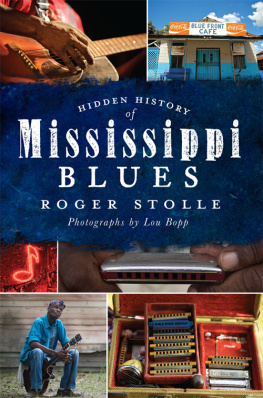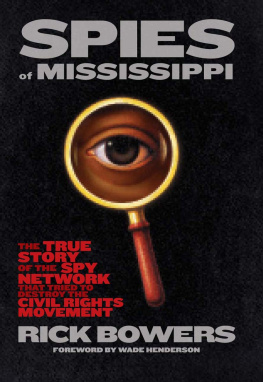Exploring Southeastern Archaeology
 Exploring
Exploring
SOUTHEASTERN
ARCHAEOLOGY
Edited by Patricia Galloway and Evan Peacock

www.upress.state.ms.us
The University Press of Mississippi is a member
of the Association of American University Presses.
Copyright 2015 by University Press of Mississippi
All rights reserved
Manufactured in the United States of America
First printing 2015

Library of Congress Cataloging-in-Publication Data
Exploring southeastern archaeology / edited by Patricia Galloway, Evan
Peacock ; foreword by Jeffrey P. Brain.
pages cm
Includes index.
ISBN 978-1-62846-240-1 (hardback) ISBN 978-1-62674-689-3 (ebook)
1. Indians of North AmericaSouthern StatesAntiquities. 2. Excavations (Archaeology)Southern States. 3. Southern StatesAntiquities.
I. Peacock, Evan, 1961 editor. II. Galloway, Patricia Kay, editor. E78.S65E93 2015
975.01dc23 2014047540
British Library Cataloging-in-Publication Data available
Essays in Honor of Samuel O. Brookes
To the memory of John W. Baswell
Contents
Jeffrey P. Brain
Evan Peacock and Patricia Galloway
Evan Peacock
Cliff Jenkins
Samuel O. Brookes and Melissa H. Twaroski
Jessica Crawford
Alison M. Hadley and Philip J. Carr
Christopher T. Hays, James B. Stoltman, and Richard A. Weinstein
Evan Peacock
Keith A. Baca
Andrew M. Triplett
Janet Rafferty
Ian W. Brown
Jay K. Johnson and Edward R. Henry
Maria Schleidt
Mary Evelyn Starr
Patricia Galloway
Foreword
Jeffrey P. Brain
I do not recall exactly when I first met Sam Brookes, but it was sometime in the early 1970s when we were both puttering around the Yazoo Basin and Sam began to be involved with the Lower Mississippi Survey (see
Then, in November 1985, a more serious document arrived: I received Form 49 prescribed by the US Civil Service Commission (FPM Chapter 736-5049-106, approved OMB Number 50-RO576). It informed me that BROOKES, Samuel Owen, was an applicant for the position of archaeologist with the USDA Forest Service and I was requested to help determine whether this person is loyal, trustworthy, and of good character. I was instructed to respond to three simple questions:
1. Has this person ever been fired from any job for any reason? Well, that was an easy No as far as I knew.
2. Do you have any reason to question this persons loyalty to the United States? Certainly a No, for Sam is as red-white-and-blue as any redneck I know.
3. Is this person reliable, honest, trustworthy, and of good character? This was a bit harder, but after wrestling with my consciencefor those were mighty hefty attributes akin to sainthoodI of course hit the Yes box.
And then I sent it off to the feds.
But I could not resist. I had xeroxed the form before filling it out and on this copy I altered my response to question 3: I checked No, added an explanation involving some (fabricated) personal tendencies of questionable nature, and sent this copy to Sam without any further comment. Well, I noticed the next time I saw him at SEAC that Sam seemed to be avoiding me. But eventually the truth was revealed and he forgave the prank (at least I hope he has!).

Figure F.1. Sam Brookes (back row, leaning against right post) representing Mississippi at the Lower Mississippi Valley Conference on Avery Island in 1978. Other participants (from top row, left to right) included Ian Brown, Bruce Smith, Stu Neitzel, Jon Muller, John Belmont; (front row, left to right) Steve Williams, Jimmy Griffin, Cynthia Price, Jim Price, Phil Phillips, Alan Toth, Bob Neuman, Jeff Brain, Dan Morse, and Bill Haag. Photo courtesy of Ian Brown.
Of course he got the job, for which we may all be thankful since it has been a platform from which Sam has gone on to make many contributions to the archaeology of Mississippi and beyond. His work has always been solid and informative, and the papers in this volume attest to the breadth of his research. Witness the range of topics that touch upon his organizational ability, pioneering efforts in the field, consideration of climatic as well as climactic events, preference for the earlier eras of prehistory, and focus on stone artifacts.
As a pottery man, I never quite understood Sams devotion to lithics, but I was always grateful that we had such a deft hand to deal with those matters. On those rare occasions when I ventured into his realm, he very graciously tolerated my efforts and even shared my infamy on occasion. For example, in a 1977 letter he wrote: One noted archaeologist sent me several pages which disputed every statement I made concerning Dalton and ended up by saying that you and I are very similarboth troublemakers who get our kicks upsetting folks. I was very proud of that.
You should be proud, Sam. Youve done a great job of sifting the sands.
Note
Exploring Southeastern Archaeology
CHAPTER 1
Introductory Remarks
Evan Peacock and Patricia Galloway
Public archaeology is many things: research, outreach, communication, negotiation, resource management, partnerships, stewardship, and service. A career spent working within these challenging arenas is a career that matters. Samuel O. Brookess career as a public archaeologist demonstrates why.
Sam received his B.A. in Anthropology at the University of Mississippi (Ole Miss) in 1970, where he twice served as assistant for archaeological field schools, followed by a stint doing salvage excavations related to land leveling for the University of Missouri in the summer of 1971. He obtained his Master of Arts from Ole Miss in 1980 with his thesis The Peabody Phase: Coles Creek in the Upper Sunflower Region (Brookes 1980a). In 1972, Sam went to work as an archaeologist for the Mississippi Department of Archives and History, a post he held for 12 years. Over this time, he conducted numerous field investigations ranging from salvage excavation at the Grand Gulf Mound (Brookes 1976a) to excavations at the Late Paleo-Indian/Early Archaic Hester site in Monroe County (Brookes 1978, 1979; Brookes and McGahey 1974) to site surveys in Claiborne, Clay, Lowndes, Monroe, and Wilkinson counties (Brookes and Inmon 1973). One result of such wide-ranging work was that Sam became a go-to person for anyone interested in the archaeology of the Magnolia State. Following a brief spell with the US Army Corps of Engineers in Vicksburg, Sam became Forest Archaeologist (later Heritage Program Manager) for the USDA Forest Service, National Forests in Mississippi. In this post he acted as mentor to a cadre of young archaeologists and helped fill many a blank space on the archaeological map of the state.
Next page




 Exploring
Exploring

